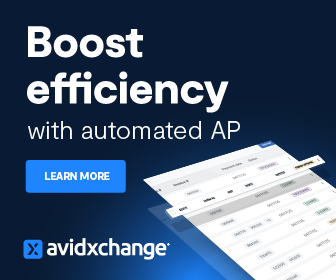Early risk detection is a foundational component of a resilient financial infrastructure. The ability to detect warning signs before they impact your organization’s income statement can mean the difference between a proactive correction and a reactive scramble.
Financial risk does not appear overnight; it builds quietly through inconsistencies and external pressures. Fortunately, the tools to identify these risks are readily available through variance analysis, financial ratios, and key performance indicators (KPIs).
When used effectively, these methods offer valuable insights that support sound financial decisions and safeguard business health.
Here is how to spot financial risk before it hits your income statement.
Start With Variance Analysis
Variance analysis is one of the most effective tools for spotting trouble early. By comparing actual performance against your budgets and forecasts, you can uncover discrepancies that need to be addressed.
The following are some key areas to focus on:
- Revenue Variances: A shortfall in expected revenue can indicate declining demand, pricing pressure, or customer churn
- Cost Variances: Rising costs may signal inefficiencies or supplier issues
- Capital Expenditures: Unexpected spikes in CapEx could point to poor planning or uncontrolled growth
To leverage this approach, automate your monthly variance reports and flag variances that exceed thresholds (e.g., >5%). Use quantitative findings with qualitative inputs from department leaders to add context to the numbers. A variance without an explanation should never be dismissed, as it could be an early warning sign of deeper risk.
Monitor Financial Ratios for Warning Signs
Ratios offer a snapshot of your company’s financial health. When monitored over time and benchmarked against industry peers, they can reveal trends that indicate emerging risks.
Some ratios to watch include the following:
- Current Ratio and Quick Ratio: A declining trend may indicate liquidity issues
- Debt-to-Equity Ratio: A rising ratio can signal over-leverage and increased solvency risk
- Inventory Turnover: A sudden decrease might suggest demand issues or supply chain slowdowns
- Gross Margin: Erosion in margins can reflect pricing pressure or rising input costs
To make better use of ratios, you will need to establish a financial dashboard with real-time tracking capabilities. Set alerts for when values move outside of acceptable ranges. The sooner you know about these shifts, the more time you will have to protect the company’s bottom line.
Use KPIs to Uncover Operational Risks Before They Become Financial
Traditional financial reporting focuses on past performance. However, you can use KPIs as a forward-looking tool. Each of these metrics provides a piece of the puzzle and can reveal operational issues that have not yet affected the financials.
It is crucial to track all of the following KPIs:
- Sales Pipeline Conversion Rates: Falling conversion rates could mean declines in revenue in the upcoming quarter
- Customer Acquisition Cost (CAC): An increasing CAC might suggest inefficiencies in your marketing or sales strategies
- Days Sales Outstanding (DSO): A rising DSO indicates potential cash flow problems and delays in customer payments
- Employee Turnover: High turnover can drive up hiring costs and lead to productivity losses
Work with key departments to develop KPI scorecards and review them monthly. Look for unfavorable trends and ask department leads to help you investigate deviations. Consider linking KPIs with financial outcomes to show how operations impact your bottom line.
Segment Your Data for Granular Risk Detection
Modern financial reporting solutions provide so much data that it can become overwhelming. Simply looking at top-level numbers can obscure underlying issues. Therefore, you need to dig deep into the data through segmentation.
Here are a few examples of smart segmentation:
- Examining revenue by product line or region
- Breaking down expenses by department
- Analyzing customer profitability
Use your ERP or BI tools to create multi-dimensional reports. Analyze trends over time and drill down into any line items that show unexpected movement.
Incorporate Predictive Analytics
Predictive analytics tools forecast what is likely to happen next. Machine learning algorithms can help you identify patterns that may lead to financial risk. For instance, you can use predictive analytics to:
- Forecast cash shortfalls based on customer payment patterns
- Predict stock shortages
- Model the financial impact of external events like tariff hikes
Predictive tools deliver the best ROI when you integrate them into decision-making processes. They should not be used as standalone reports but should instead be used to align decisions with organizational goals.
Embed Early Risk Detection Into Your Monthly Close
The monthly close is an opportunity to detect early signs of trouble. Here is a close checklist to help you embed early risk detection into your close process:
- Are revenue and expense variances explainable?
- Have any ratios fallen outside accepted ranges?
- Are reserves and accruals being adjusted in response to new risks?
You can incorporate a risk-watch section into your monthly close package. This approach summarizes emerging red flags and gives your team more time to adapt.
Protect Business Continuity by Spotting Risks Earlier
Spotting financial risks before they hit the income statement is about systematically reviewing the right data and asking the right questions. Act early on warning signs to protect the profitability of your organization.




